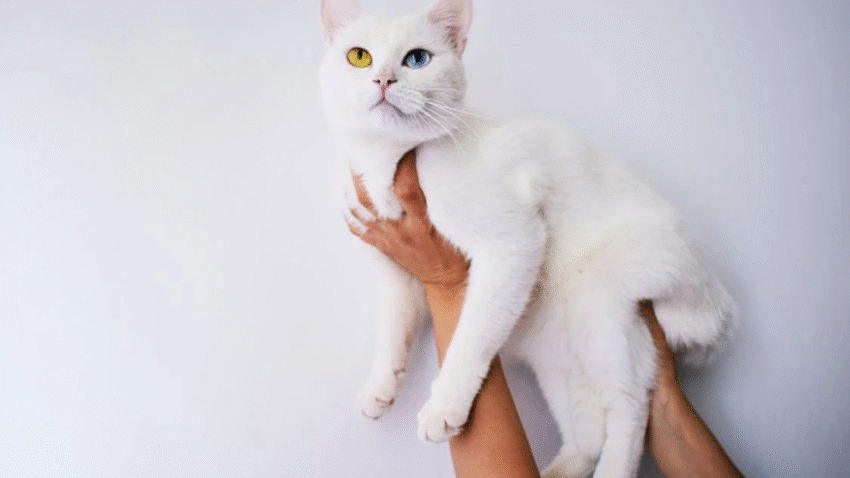Introduction
Bringing a new baby or pet into the home is exciting—but it can also be stressful for your cat. Cats are creatures of habit, and sudden changes to their environment, routines, or territory can cause anxiety or behavioral issues. In this article, you’ll learn how to help your cat adjust to a new baby or pet with calm, confidence, and minimal stress.
Why Adjustment Support Matters for Cats
Cats thrive on stability and predictability. When a new baby or pet arrives, your cat may feel threatened, displaced, or confused. This can lead to:
- Hiding or withdrawal
- Aggression
- Litter box issues
- Overgrooming or stress-related behaviors
Helping your cat adapt to change is important for their emotional well-being and the overall harmony of your household. A smooth introduction sets the stage for peaceful coexistence and prevents long-term issues.
Step-by-Step Guide to Helping Your Cat Adjust
Step 1: Prepare Early and Gradually
Don’t wait until the baby or new pet arrives to start preparing your cat. Begin changes weeks in advance:
- Adjust feeding or sleeping spots gradually if they’ll need to move.
- Play recordings of baby sounds or animal noises to desensitize your cat.
- Use baby lotions, wipes, or pet scents to introduce new smells into the home.
Start slowly and give your cat time to process each change.
Step 2: Keep a Stable Routine
Cats find comfort in consistency. Maintain:
- Feeding times
- Play sessions
- Grooming routines
- Quiet time or cuddles
Even with a newborn or new pet in the house, try to stick to your cat’s regular schedule as much as possible.
Step 3: Create a Safe Space
Give your cat a calm, quiet place where they can retreat. This area should include:
- A cozy bed or hideout
- Litter box
- Food and water
- Toys or scratchers
This safe space acts as a stress-free zone where your cat can relax away from noise and unfamiliar smells.
Step 4: Introduce Scents Before Visual Contact
For new babies:
- Let your cat sniff baby blankets, hats, or clothing items before the baby comes home.
For new pets:
- Swap bedding or toys between the cat and the new pet before they meet.
- Rub a soft cloth on each animal and let the other smell it.
Scent swapping helps your cat get used to the newcomer without direct interaction.
Step 5: Use Slow and Controlled Introductions
For a new baby:
- Let your cat observe from a distance.
- Avoid forcing interaction.
- Reward calm behavior with treats or gentle praise.
For a new pet:
- Start with a barrier, such as a baby gate or closed door.
- Gradually increase exposure through short, supervised sessions.
- Watch for signs of stress (hissing, growling, hiding) and slow down if needed.
Patience is key—some cats may take days or weeks to accept the change.
Step 6: Maintain Positive Associations
Help your cat form positive associations with the new baby or pet:
- Give treats or praise when the baby or new pet is nearby.
- Engage in play or petting sessions right after exposure.
- Never punish your cat for reacting negatively—instead, remove them gently and try again later.
Common Mistakes to Avoid
1. Forcing Interaction Too Soon
Let your cat set the pace. Rushing introductions can lead to fear or aggression.
2. Ignoring Your Cat
It’s easy to get busy with a newborn or new pet, but don’t neglect your cat’s emotional needs. Even a few minutes of one-on-one time daily helps.
3. Not Supervising Early Interactions
Always supervise first encounters, especially between your cat and a new dog or small child. Safety first—for everyone.
4. Punishing Stress Responses
Hissing, hiding, or swatting are signs of discomfort, not disobedience. Never punish your cat for reacting this way. Offer space and comfort instead.
5. Skipping the Scent Introduction
Scent is one of a cat’s strongest tools for understanding their environment. Skipping this step can make introductions more stressful.
Extra Tips & Recommendations
- Use Feline Pheromone Sprays or Diffusers: Products like Feliway help calm cats and reduce stress during transitions.
- Trim Nails: Keep your cat’s claws trimmed before introductions to prevent accidental scratches during tense moments.
- Provide Vertical Space: Cat trees or shelves allow your cat to observe the changes from a safe height, giving them more control and confidence.
If your cat continues to show signs of anxiety or aggression after a few weeks, consult a vet or feline behaviorist for personalized support.
Check out our related guide on [How to Treat Minor Injuries on Your Cat at Home] in case your cat gets into a minor scuffle during the adjustment period.
Conclusion
Helping your cat adjust to a new baby or pet takes time, patience, and empathy. With slow introductions, scent swaps, a consistent routine, and plenty of love, your cat can learn to accept—and even enjoy—the new addition. Remember: your cat isn’t being difficult; they’re just trying to understand their new world. Support them through the process, and you’ll build a more peaceful and loving home for everyone.
